A Retrospective Exhibition That Almost Was [George Weiss, 1933-2020] - A remembrance by Peg LeVine
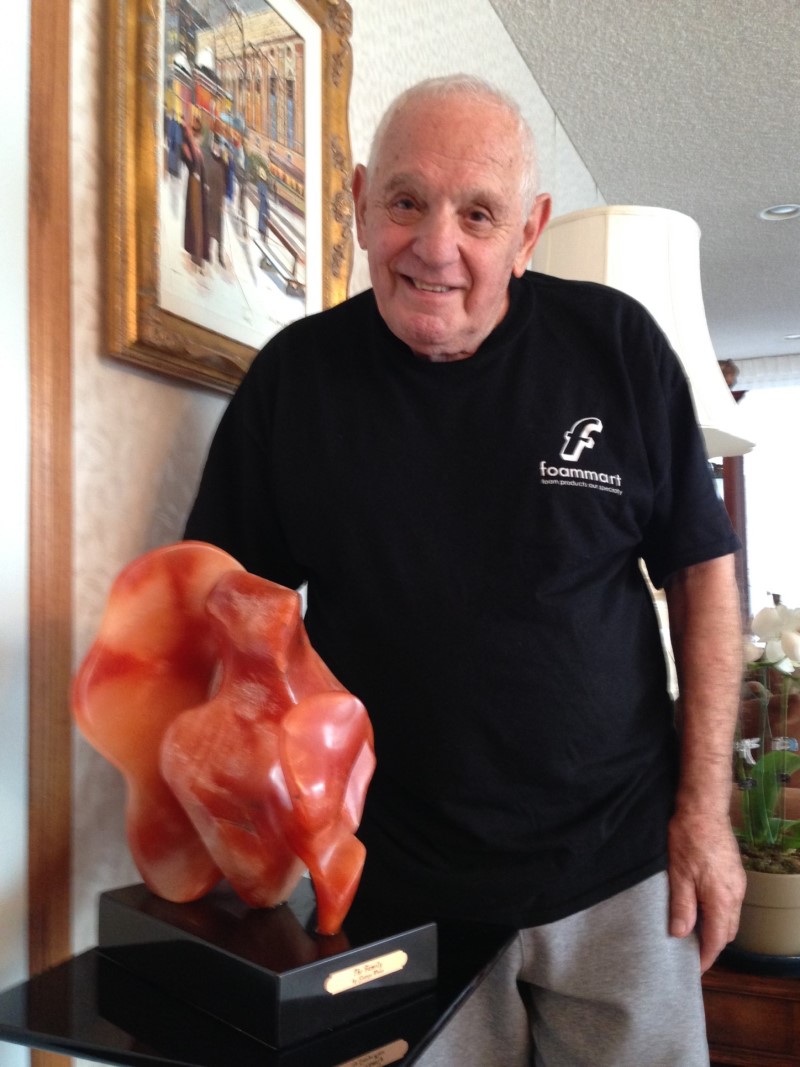
In his testimonial archived with the USC Shoah Foundation, George Weiss spoke to the dread and exile he endured as a child during Nazi Party rule. This chronicle is about the man who sculptured all he lived, imagined and embodied.
My initial encounter of George was on 25 January, 2015 when colleagues introduced us in the corridor of the USC Shoah Foundation. While hearing the descriptors -- survivor of Nazi invasions, landscape painter, Francophone Belgian, archivist researcher -- I was captured by the metal objet d’art George wore around his neck. “I am taken by your Shield of David, George; it’s so … so bold.” George placed his hand flatly upon his chest, “Oh this, I made this”. “So, you’re a sculptor”. A pause. “I suppose I am.”
Days later (28 January), I met George for morning coffee and cake at his apartment in South Beverly Hills, where paintings were also landscapes for his sculptures. In that uncanny way, George and I met on the day I was accepted into a stone studio in Culver City. (This was soon after arriving from Melbourne, Australia for the inaugural fellowship at the Centre for Advanced Genocide Studies).
Early on in our day, it was clear that George was a man not mystified by that which mystifies most humans. Respectfully, George first acquainted me with works by his mentor and infamous sculptor, Leon Saulter (1908 Poland -1986 Los Angeles) whom he admitted he idolised. George compared himself brutally to Saulter and rendered his own work unworthy of an exhibition. I asked George what Saulter’s sculptures evoked in him. The one titled Proud Bird (Plate 1) gave him “a sense of being lifted up”. “Lifted up from what, George?” “From misery”, he said with ease. “See these cuts – so deliberate, so honest.” His tone softened when he touched The Eternal Mother by Saulter. He ran his hand along the black marble base and spoke of his own mother. While the brilliance of Saulter is undeniable, I nudged George. “How can stone formed by hands that hold one’s own history ever be compared? Over tea we spoke on this suchness.
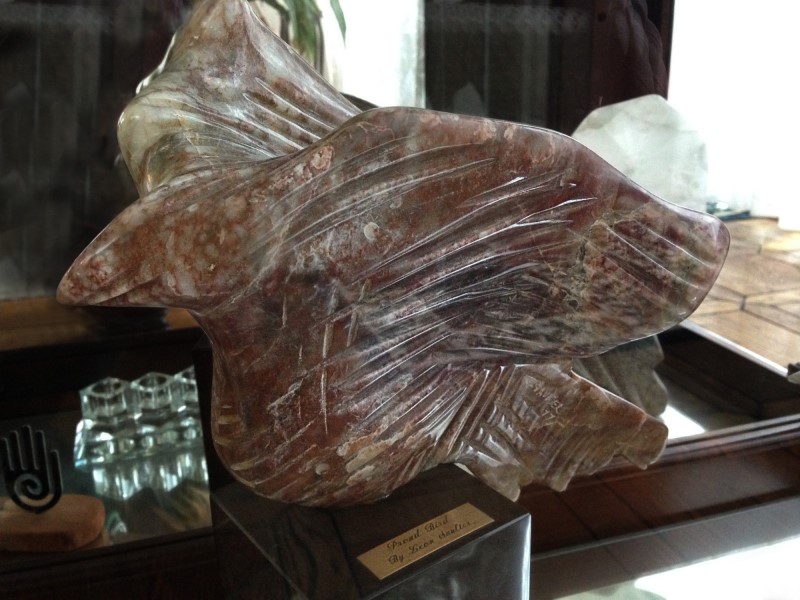
Plate 1 (above): The Proud Bird by Leon Saulter (1908 Poland -1986 Los Angeles)
Morning turned to afternoon as our tête-à-tête expanded to chisels, rasps, alabaster, marble, wax, bronze, quips on elegance and simplicity, art as ritual -- ritual as art. George spoke of rousing sculptors. He so loved “the allure” of the less detailed bronze dancers sculpted by Edgar Degas (1834-1917). The raw-cast bronze that stood poised in his apartment was not the typified fourteen-year old dancer most associate with Degas.
Featured in his lounge room, too, was a glass cabinet filled with ritual objects. Above all, I noticed the Havdalah and asked about it (Plate 2). He said that this spice container was his prize possession, while adding “…and I am not a religious man”. He recounted affectionately how his mother knew to bury their Havdalah deep underground at the base of his childhood tree after digesting fully the Nazis Party’s intent. After the Holocaust, he returned to that tree and just started digging. “This Havdalah survived underground – a bit like me.”
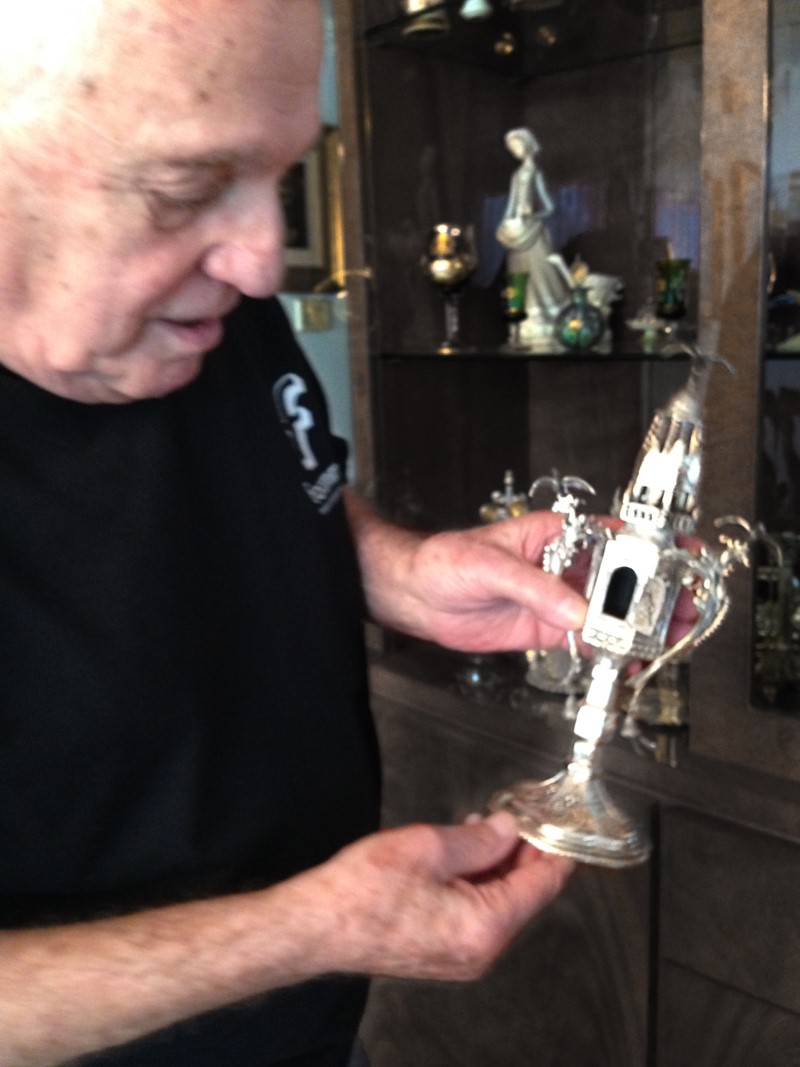
Plate 2 (above): Spice container (with the Family sculpture in background)
There were unexplainable connexons between the placement of objects in George’s living space, as if one came to inhabit another. There was something about the wideness of George’s imagination that dwelled in his home. Perhaps it was what he lived and never could live as a child, and perhaps it is how he loved and how he was loved.
“A painting is not so straight forward and yet it is straightforward”, said George. “I see it – I choose my palette – I paint it. But a sculpture? Wax and metal are different to stone. Stone exposes itself. Stone takes the time it needs. I had to learn to not rush stone.”
On this matter, George spoke at length about his most declaring sculpture, The Family (Plates 3 and 4).
I was angry for days. I was let down -- gloomy. I almost smashed this. This stone was supposed to be one solid form, but it broke into three pieces as I was finishing it. I went too far. I expected too much. I used too much pressure or maybe the wrong tool. (Long pause). My family had no choice. We were cut apart…so many times.
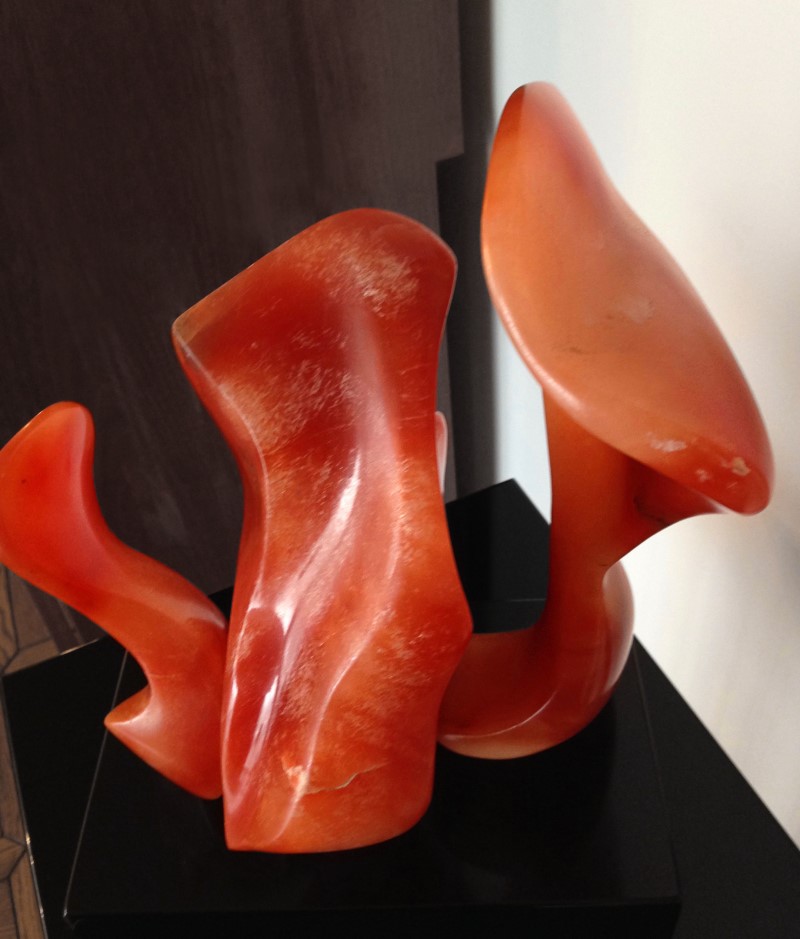
Plate 3 (above): Family
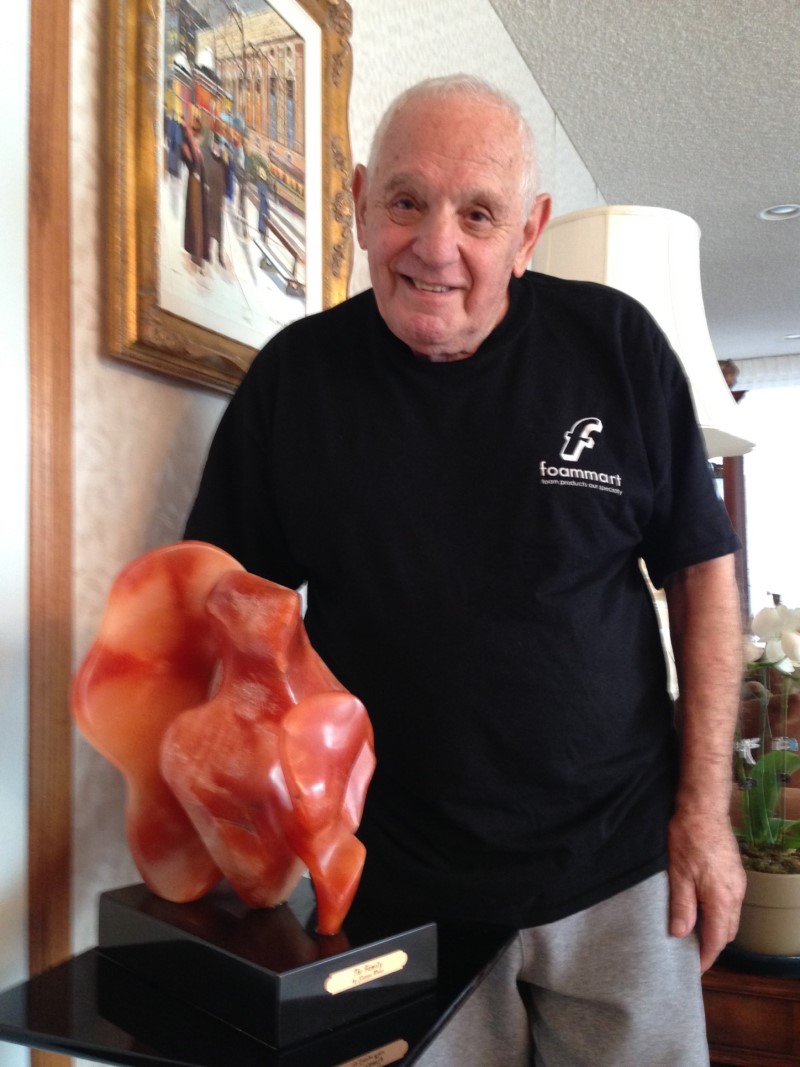
Plate 4 (above): George with Family. January 28, 2015.
These disjointed russet orange arches were rubbed smooth by George, which needed gentle handling. He secured the three pieces onto a base, which made a constellation all its own.
After the Family, George introduced me to his carving of a woman’s torso. He rested his hand on her shoulder (Plate 5). This sculpture is a kind of prototype of sensitive women he respected in his life – a composite of his mother and his wife, mostly.
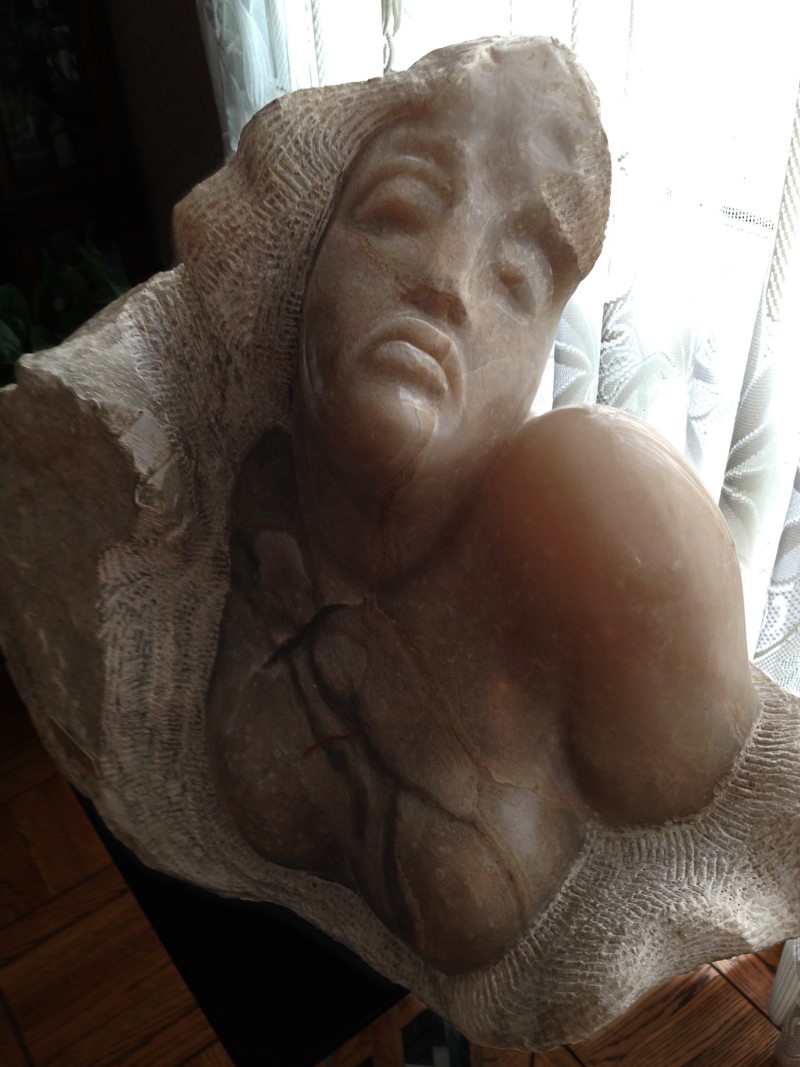
Plate 5 (above): Woman Figure
Unexpectedly and as our day came to a natural close, George invited me to see one last piece in another room. He ran his fingers ever so deliberately along the curves of the stone couple that dwelled in his bedroom. Deep longing for his departed wife Giselle spilled out. This stone was the sacred altar. Out of respect, the photograph of this stone is withheld.
Postscript on A Retrospective Exhibition that Almost Was
How I wish I had captured George’s sculptures on a medium format camera in light and shadows that he chose. If only I had filmed the way George’s hands traced Songlines in stone. The thing is, just as stone cannot be rushed, it took three years of meeting casually before George agreed to ‘the possibility’ of a retrospective exhibition so that his sculptures could be shown together. In 2019, I began surveying gallery space – as a corridor on offer would just not do. I widened the field to an international retrospective that could be curated in Los Angeles and travel to Melbourne (where the Jewish Holocaust Centre resides and where I located an independent gallery), on to the Holocaust Centre of New Zealand in Wellington. But alas.
Like this article? Get our e-newsletter.
Be the first to learn about new articles and personal stories like the one you've just read.
